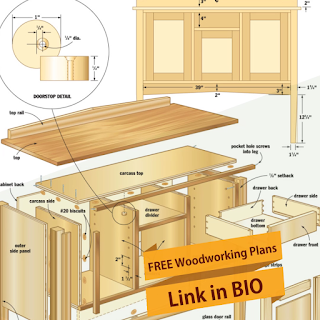Unlock Your Inner Craftsperson: Free Online Resources for Easy Woodworking Projects
The satisfying scent of freshly cut wood, the smooth feel of handcrafted creation – woodworking offers a rewarding escape and a tangible connection to the creative process. But the thought of complex projects and expensive tools can be daunting for beginners. Fear not! A wealth of free online resources makes it easier than ever to embark on your woodworking journey, regardless of your skill level. This article explores some fantastic websites and platforms that provide simple, step-by-step instructions for easy woodworking projects, perfect for beginners.
Beginner-Friendly Websites and Channels
The internet is a treasure trove of woodworking knowledge, but sifting through the overwhelming amount of information can be tricky. Fortunately, many websites and YouTube channels cater specifically to beginners, offering projects that require minimal tools and experience. These resources often prioritize clear instructions, detailed diagrams, and even video tutorials that guide you through each step of the process. This visual learning approach makes even complex techniques more accessible. Look for sites and channels that emphasize the basics, such as safe tool use and fundamental woodworking techniques.
YouTube Channels for Visual Learners
Visual learners will find YouTube invaluable. Many channels showcase easy woodworking projects, often with a focus on simplicity and affordability. Search for terms like "easy woodworking projects for beginners," "beginner woodworking tutorials," or "simple wood crafts." Pay close attention to the channel's overall content; a channel consistently delivering high-quality, easy-to-follow instructions is a valuable resource. Don't be afraid to browse and compare different channels to find a style that suits your learning preferences.
Websites with Detailed Plans and Instructions
Numerous websites offer downloadable woodworking plans with detailed instructions, often accompanied by photos and illustrations. Some sites specialize in providing free plans for smaller, simpler projects perfect for beginners. These plans typically include cutting lists, materials lists, and step-by-step instructions, ensuring you have everything you need to successfully complete your project. These sites are invaluable for those who prefer a more structured learning approach with written instructions.
Choosing Your First Project: Simple & Rewarding
Starting with a simple project builds confidence and allows you to practice fundamental techniques before tackling more ambitious creations. Avoid complex joinery or intricate designs initially. Focus on projects that utilize straightforward cuts and basic assembly methods. Consider these beginner-friendly project ideas:
- Simple Shelf or Coat Rack: A great introduction to basic cuts and assembly.
- Wooden Box or Crate: Teaches you about miter cuts and joining techniques.
- Cutting Board: A practical project that allows you to practice finishing techniques.
- Birdhouse or Feeder: Fun and rewarding, introducing you to working with smaller pieces.
Essential Tools for Beginners
You don't need a fully equipped workshop to start woodworking. Begin with a few essential tools that you can gradually expand upon as your skills develop. These basic tools are usually sufficient for many beginner projects:
- Measuring Tape and Pencil: Accurate measurements are crucial.
- Hand Saw or Circular Saw: For cutting wood to size.
- Screwdriver(s): For assembly.
- Sandpaper: For smoothing surfaces.
- Wood Glue: For strong and reliable joints.
Remember, safety is paramount. Always wear appropriate safety glasses and follow safety guidelines provided in your chosen woodworking plans or tutorials. Start slowly, practice regularly, and enjoy the rewarding process of transforming wood into beautiful and functional creations!

























